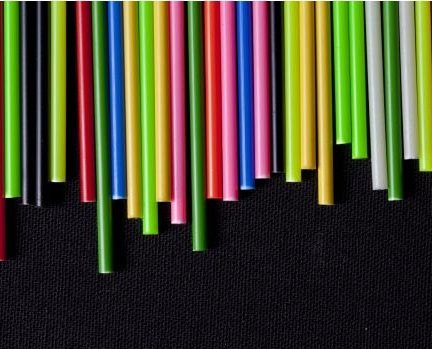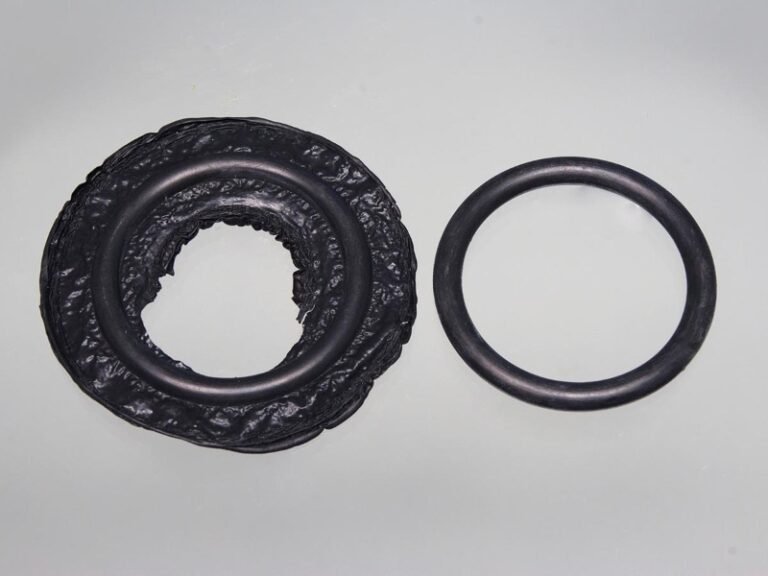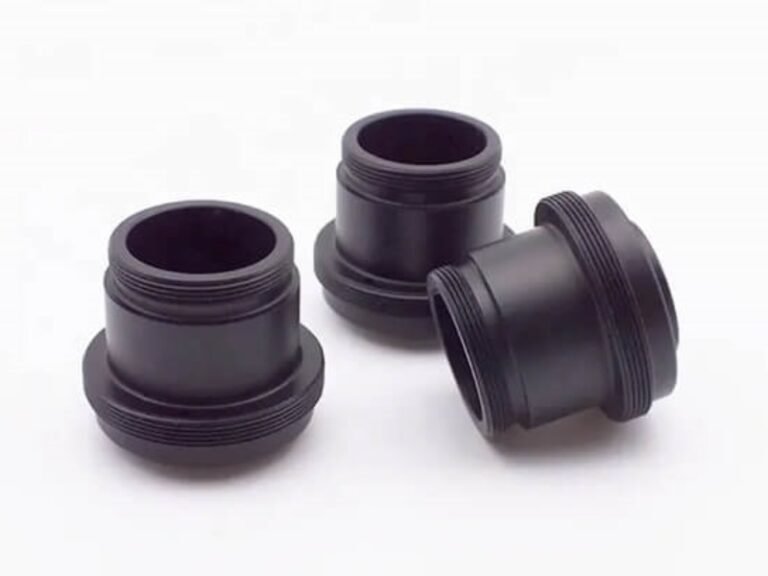High-performance plastics are being widely used and are gradually replacing some traditional materials such as bronze, stainless steel, aluminum and ceramics. This is why people are so interested in articles on plastic material selection guides. Important reasons for the market’s gradual preference for plastics include:
- Longer service life of parts
- No lubrication
- Less wear on pairs of surfaces
- Faster equipment/line operation
- More energy-efficient operation of equipment
- Higher corrosion resistance and inertness
- Lighter weight
With so many options for plastic materials today, How to choose the right plastic material for your molded plastic parts is no easy task. For that reason, we’ve developed this plastic material selection guide to help newcomers to engineering plastics get up to speed quickly.

Understanding Plastic Material Properties
What is Plastic?
Plastic is a polymer chain formed by a large number of repeating units (monomers) through polymerization.
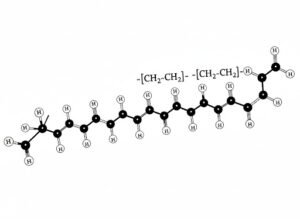
Chain Structure:
- Straight Chain: Flexible and easy to process.
- Branched Chain: Increases flexibility or reduces crystallinity.
- Crosslinked Network: Forms a thermoset plastic, resulting in high hardness and infusibility.
Crystalline and Amorphous Regions:
- Crystalline Region: Molecular order enhances strength and heat resistance.
- Amorphous Region: Molecular random arrangement makes the material transparent or elastic.
Physical Properties of Plastics
- Density: Most plastics are lightweight compared to metals
- Melting/Softening Point: Temperature at which plastics deform under heat
- Hardness: Resistance to surface scratching and indentation
- Toughness/Brittleness: Ability to absorb energy before breaking
- Elasticity: Ability to deform and return to original shape
- Tensile Strength: Resistance to pulling forces
- Compressive Strength: Resistance to pressing forces
- Wear Resistance: Ability to resist surface abrasion
- Dimensional Stability: Resistance to deformation from temperature, moisture, or load
- Transparency/Gloss: Visual appearance characteristics
- Thermal Conductivity: Most plastics are thermal insulators
- Water Absorption: Some plastics absorb moisture, affecting performance
- Electrical Insulation: Most plastics are good electrical insulators
Chemical Properties of Plastics
- Chemical Stability: Resistance to acids, bases, salts, and common solvents
- Corrosion Resistance: Ability to resist degradation by chemical media
- Oxidation Resistance: Resistance to air or thermal oxidation
- UV Resistance: Stability under sunlight or ultraviolet exposure
- Solubility: Solubility in certain organic solvents or insolubility in water/acid/base
- Aging Resistance: Performance retention over time
- Flammability: Ease of ignition, dripping, smoke, and toxicity during burning
Zhongde provides solutions to enhance and modify the properties of plastics based on customers’ performance requirements. By incorporating additives such as fillers, stabilizers, plasticizers, flame retardants, or colorants, Zhongde can improve strength, flexibility, heat resistance, UV stability, flame resistance, and appearance, making plastics better suited for a wide range of applications.
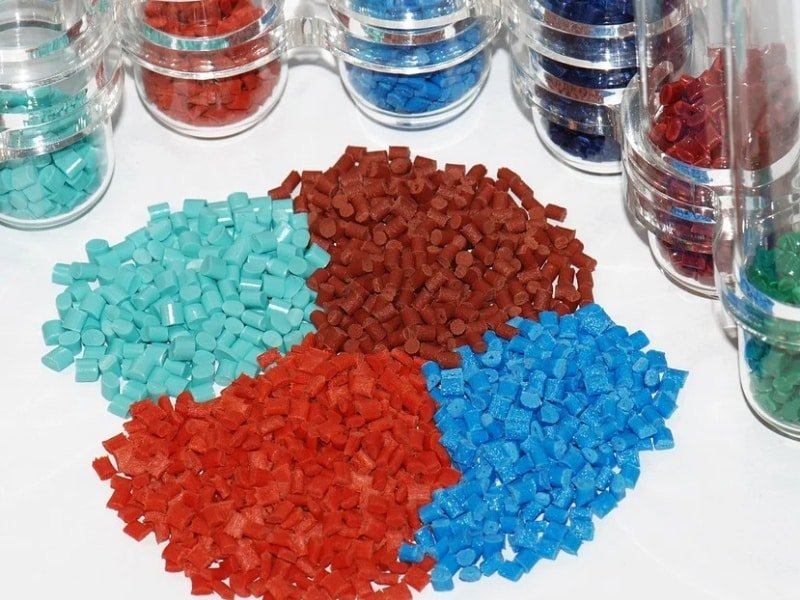
Injection Molding Material Selection Service
Plastic Material Selection Process
1. Identify the Design Requirements
The first thing to do is to identify what exactly your requirements are. It includes but is not limited to thoroughly understanding the function of the finished product, the expected lifespan of the component, the conditions under which it is expected to operate, etc.
2. Identify the Material Selection Criteria
It is the part where you should consider the stiffness, strength, chemical resistance, thermal properties, and overall cost of different types of plastics.
3. Identify Candidate Materials
Once you know what type of material you need and what conditions you need it for, you can begin to shortlist the materials you know will perform well under your requirements. You can start this process by consulting supplier catalogs and material databases or working with material experts.
4. Evaluate Candidate Materials
You should have a list of possible materials to select at this stage. It is when you should test these materials against your requirements through simulations or by collecting data from material suppliers.
5. Plastic Selection
It is the final step in selecting materials, and choosing the material best fits the design requirements and the selection criteria is critical.
Considerations for Application and Environment
It starts by carefully looking at what the application needs and where the final product will be used. From dealing with hot and cold to handling mechanical stress, every factor is a guide to finding the right material.
Here are some usual plastic properties to think about for environmental applications.
- Temperature Range:Consider the temperature extremes the plastic component will face, whether in hot or cold environments.
- Humidity and Moisture Exposure:Evaluate if the product will be exposed to high humidity, moisture, or even submersion.
- Chemical Exposure:Identify any contact with chemicals, oils, solvents, or other corrosive substances.
- UV Exposure:Assess if the product will be exposed to sunlight or outdoor conditions.
- Mechanical Stress:Assess the level of mechanical stress, including factors like impact, load, or abrasion.
- Electrical Properties:Determine if the plastic component requires specific electrical conductivity or insulation properties.
- Flammability Requirements:Check if the product needs to meet specific flammability standards.
- Regulatory Compliance:Consider industry-specific regulations and standards that the product must adhere to.
- Dimensional Stability:Assess the need for precise dimensional stability, especially in applications with tight tolerances.
- Aesthetic Requirements:Determine if the product has specific aesthetic requirements, such as color or surface finish.
- Recyclability and Sustainability:Consider the importance of recyclability or sustainable material choices.
Consideration for Cost Implications of Plastic Material Selection
When we consider the impact of different plastic materials on the price, it is mainly reflected in the raw materials, production process, molds, and these three aspects:
Raw Materials:
Diverse Material Costs: Different plastic materials come with varying costs per unit of raw material. High-performance or specialty materials often command higher prices than standard polymers.
Fillers and Additives: Some materials require additives or fillers to enhance specific properties. While these additions can improve performance, they may also contribute to increased material costs.
Processing:
Molding Temperature and Energy Use: Certain materials require higher processing temperatures, leading to increased energy consumption during the molding process. This impacts operational costs.
Processing Complexity: Materials that demand intricate processing techniques or specialized equipment may incur higher labor costs and maintenance expenses.
Tooling:
Tooling Material Compatibility: The choice of plastic material affects the type of tooling required. Some materials may necessitate more robust or specialized molds, influencing tooling costs.
Tool Longevity: Materials with abrasive characteristics or those prone to wear and tear may reduce the lifespan of molds, leading to more frequent tooling replacement and maintenance costs.
Consideration for Manufacturing Efficiency and Cycle Times
When considering the impact of production on the choice of plastic material, the following factors usually need to be taken into account.
To get deeper understanding of the manufacturing process, read our blog: Principle of Injection Molding Process
Mold Filling and Cooling Rates
Material Flow Characteristics: The viscosity and flow behavior of the chosen material influence how efficiently it fills the mold cavities. Materials with better flow properties can lead to faster and more uniform filling.
Cooling Rates: Some materials cool more rapidly than others. Faster cooling times can contribute to shorter cycle times, enhancing manufacturing efficiency.
Cycle Time Optimization
Material Solidification Rates: Materials with faster solidification rates facilitate shorter cycle times. Quick solidification allows for faster part ejection and more rapid cycling through the molding machine.
Processing Temperatures: Materials with lower molding temperatures can contribute to reduced cycle times by speeding up both heating and cooling phases of the injection molding process.
Tooling and Equipment Compatibility
Tool Wear and Maintenance: The wear resistance of a material affects the longevity of molds and tooling. Materials that cause less wear contribute to longer tool life and fewer disruptions for maintenance.
Compatibility with Injection Molding Machines: Some materials may require specific types of injection molding machines or processing conditions.
Selection Plastic Materials Injection Molding Comparison
Below is a comparison table of common plastic injection molding materials, which clearly shows the differences and helps you to choose the right plastic material.
| Plastic Type | Pros | Cons | Application |
|---|---|---|---|
| POM | High strength, low friction, chemical resistance, dimensional stability, and excellent machinability. | Susceptible to UV degradation, limitations in high-temperature applications, and sensitivity to hydrolysis. | Gears, pumps, pump impellers, conveyor links, soap dispensers, fan and blower blades, automotive switches, electrical switch components, buttons, and knobs. |
| PMMA | Exceptional optical clarity, high transparency, a glass-like appearance, lightweight with good impact resistance, and excellent UV resistance. | lower resistance to solvents, limited heat resistance, lower load-bearing capability compared to stronger materials, and is known for its brittleness. | Widely used for transparent and high-gloss applications such as optical lenses, lighting fixtures, display screens, signage, and decorative elements. |
| ABS | Durable, impact-resistant, versatile, and offers good heat resistance, relatively cheap | Vulnerable to UV degradation, can have a yellowing effect over time, and may require additional stabilizers for outdoor use. | Automotive components (interior and exterior parts), electronic housings (such as computer monitors and printers), toys (LEGO bricks), and consumer goods (luggage, cases, and kitchen appliances). |
| HDPE | Lightweight, strong, resistant to chemicals, and suitable for food packaging. | Susceptible to UV degradation over time and may not be suitable for high-temperature applications. | Plastic bottles (milk, detergent, and shampoo), grocery bags, containers, pipes, and geomembranes. |
| PC | High impact resistance, optical clarity, and heat resistance. | Susceptible to scratching, may yellow over time, and can be more expensive. | Eyewear lenses, compact discs, medical devices, and electronic components. |
| PP | High impact resistance, optical clarity, and heat resistance. | Susceptible to scratching, may yellow over time, and can be more expensive. | Bottle caps, food containers, automotive bumpers, syringes, kitchen utensils, and storage containers. |
| PS | Remarkably lightweight, cost-efficient, and highly moldable, offering versatility in various shaping applications. | Brittle, susceptible to scratching, and may not withstand high temperatures. | Foam food containers, cups, toys, and CD jewel cases. |
| PA | High strength, excellent wear resistance, and good chemical resistance. | Can absorb moisture, may be prone to UV degradation, and tends to be more expensive. | Gears, bearings, automotive components, such as engine covers and intake manifolds, electrical connectors, |
| PEEK | Exceptional chemical resistance, high-temperature stability, and excellent mechanical properties. | Higher cost compared to other polymers, may be challenging to process. | Aircraft bearings, seals, spinal implants, joint replacements, and high-performance automotive components. |
| PBT | Good electrical insulating properties, high impact resistance, and chemical resistance. | Susceptible to degradation under UV exposure, may not withstand high temperatures. | Electrical connectors, sensor housings, and electrical switches. |
| PET | Similar to PBT, Lightweight, transparent, and recyclable. | Vulnerable to scratches, may absorb odors, and can degrade under high temperatures. | Beverage bottles, food packaging (like salad containers), synthetic fibers for clothing, and thermoformed trays. |
Plastic Material Selection Guide
If you want to reduce the time spent on material engineering, there are some lessons to be learned on material selection:
- Try ABS, ABS has been used in many applications, it is reasonably priced, strong and looks good, even if you don’t follow the design criteria for plastic parts, it has a relatively low melting point, the parts we use for our display are ABS.
- If you need cheap price, hardness and appearance are really not too important, we suggest trying PP, the square box we designed is made of pp.
- If you need harder or more heat resistant material than ABS, please try PC material, if you don’t follow the standard design criteria for plastic parts, PC is not as forgiving as ABS.
- If it needs to be beautiful and transparent, try acrylic (PMMA). PMMA can be a bit brittle. Transparent PC will be stronger than PMMA, but less aesthetically pleasing.
This blog provides a practical guide for selecting the ideal plastic material for injection molding projects. From assessing the application environment to understanding material properties, considering costs, and ensuring compatibility with secondary processes, we’ve outlined a step-by-step checklist. Whatever type of injection molding material you need, Zhongde’s engineers can help!
Zhongde’s Checklist for Injection Molding Selection Guide
Zhongde makes a checklist on the plastic material selection process, following this selection guide, hope to help you find the right plastic material.
- The material is good for where it'll be used, considering temperature, humidity, and chemicals.
- See how the material acts, like when it gets hot or turns into a liquid.
- Analyze cost implications for raw materials, processing, and tooling.
- Make sure the material can handle sunlight, moisture, and certain temperatures.
- Confirm the material works well with secondary processes like finishing, coating, or joining.
- Check if the material keeps its color well.
- Understand how the material affects the product's whole life, including when you're done using it.
- Test and make examples to be sure the chosen material is right.
